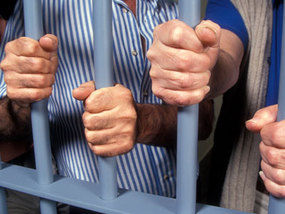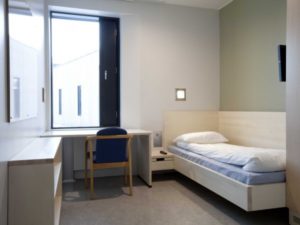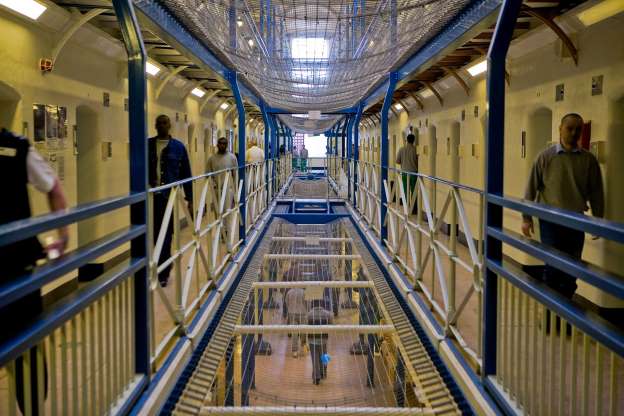The failure of our prisons – Lydia Torrington
With 92, 500 people currently in prison in the UK costing us almost £14 million per day to uphold, and the same amount per prison per year as it is to send a boy to Eton school, it is within reason to expect that our money is being well spent. It is therefore shocking to know that UK prisons are widely described as failing. Almost half of all prisoners will return to prison within a year of being released. This alarming figure makes it clear that our prisons are getting something seriously wrong when it comes to deterring and rehabilitating offenders and is costing the taxpayers more than it should be.
 The problem with prisons starts when we stop viewing prisoners as people and start seeing them as cost and profit. But being human, there are 600 incidents of self-harm, at least one suicide and 350 assaults every week in a place where it should be learnt that crime is wrong, and it should be taught that there are other ways of life. Offenders who have drug addictions or mental health problems struggle to get the help they need and therefore come out of prison no different from before. Extreme views say tha
The problem with prisons starts when we stop viewing prisoners as people and start seeing them as cost and profit. But being human, there are 600 incidents of self-harm, at least one suicide and 350 assaults every week in a place where it should be learnt that crime is wrong, and it should be taught that there are other ways of life. Offenders who have drug addictions or mental health problems struggle to get the help they need and therefore come out of prison no different from before. Extreme views say tha t prisoners should be locked away and punished for the duration of their crime, so therefore to offer rehabilitation and the teaching of skills or medical help is far too generous. However, offenders are punished the minute that their freedom is taken away and they are given a sentence. Arguably, being kept away from family, friends and the outside world is punishment enough so the primary focus of prisons themselves should be to rehabilitate offenders to the point where they will leave prison and never come back.
t prisoners should be locked away and punished for the duration of their crime, so therefore to offer rehabilitation and the teaching of skills or medical help is far too generous. However, offenders are punished the minute that their freedom is taken away and they are given a sentence. Arguably, being kept away from family, friends and the outside world is punishment enough so the primary focus of prisons themselves should be to rehabilitate offenders to the point where they will leave prison and never come back.
As prisons currently are in the UK, 2 in 5 of them are unacceptably unsafe due to understaffing and a lack of money and resources to cope with the overcrowded prisons. There is not enough money or staff to keep prisons going as they are, so the lack of education or rehabilitation is no surprise. Wandsworth Prison in London is currently 168% full. There are presently 5 prisoners to every guard, meaning that prisons are unsafe, and riots are possible at any moment. Prisons are failing to keep their inmates safe, so it is not shocking that prisoners’ resort to defending themselves with violence and it is why the level of serious assaults in prison has more than doubled in the last 4 years.

Basically, the overall picture is that prisons are seriously overcrowded and understaffed. The solution to this is to have methods in place to stop the 50% of offenders from coming back through prison gates within 12 months. A prime example of this is the Norwegian prison system where prisoners are treated as people and re-offending levels are the lowest in the world. In Norway, prisons are much less harsh and are focussed primarily on rehabilitating their inmates by teaching skills and responsibility. They have programmes such as woodworking, assembly workshops and even a recording studio. Although you would think that this would mean that going to prison in Norway really isn’t too shabby, so crime is higher, in fact there are less than 4000 people in prison in Norway, compare to 92,500 in the UK.


From looking at and digesting all of these figures you may be thinking why on earth are our prisons not like Norway’s. Politicians have been trying to make this happen for many years, but the reality is that people are much less willing to pay money towards prisons that towards things like education. Therefore, despite the huge long-term cost benefits of rehabilitation programmes, there is simply not enough money to train staff and implement them. Even though re-offending costs us £13 billion a year, we are not willing to spend some money on education and conditions in prison like Norway does to save us some serious money in the future. So until we find the money to make this investment, the so-called ‘revolving door’ of prison will persist and prisoners will continue to be neglected.















Post Comment
You must be logged in to post a comment.